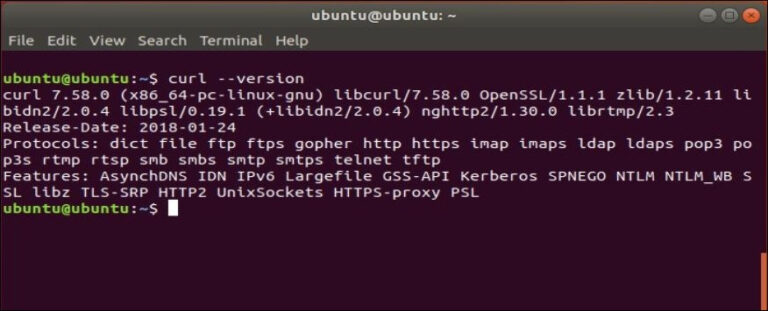
- #HOW TO INSTALL CURL ON UBUNTU HOW TO#
- #HOW TO INSTALL CURL ON UBUNTU INSTALL#
- #HOW TO INSTALL CURL ON UBUNTU UPDATE#
Step 2 - Executing the Docker Command Without Sudo (Optional)īy default, the docker command can only be run the root user or by a user in the docker group, which is automatically created during Docker’s installation process.
#HOW TO INSTALL CURL ON UBUNTU HOW TO#
We’ll explore how to use the docker command later in this tutorial. Installing Docker now gives you not just the Docker service (daemon) but also the docker command line utility, or the Docker client. └─24321 /usr/bin/dockerd -H fd:// -containerd=/run/containerd/containerd.sock Loaded: loaded (/lib/systemd/system/rvice enabled vendor preset: enabled)Īctive: active (running) since Tue 17:00:41 UTC 17s ago
#HOW TO INSTALL CURL ON UBUNTU INSTALL#
Make sure you are about to install from the Docker repo instead of the default Ubuntu repo:
#HOW TO INSTALL CURL ON UBUNTU UPDATE#
This will also update our package database with the Docker packages from the newly added repo.

To follow this tutorial, you will need the following: You’ll install Docker itself, work with containers and images, and push an image to a Docker Repository. In this tutorial, you’ll install and use Docker Community Edition (CE) on Ubuntu 20.04.


They’re similar to virtual machines, but containers are more portable, more resource-friendly, and more dependent on the host operating system.įor a detailed introduction to the different components of a Docker container, check out The Docker Ecosystem: An Introduction to Common Components. Containers let you run your applications in resource-isolated processes. Docker is an application that simplifies the process of managing application processes in containers.


 0 kommentar(er)
0 kommentar(er)
